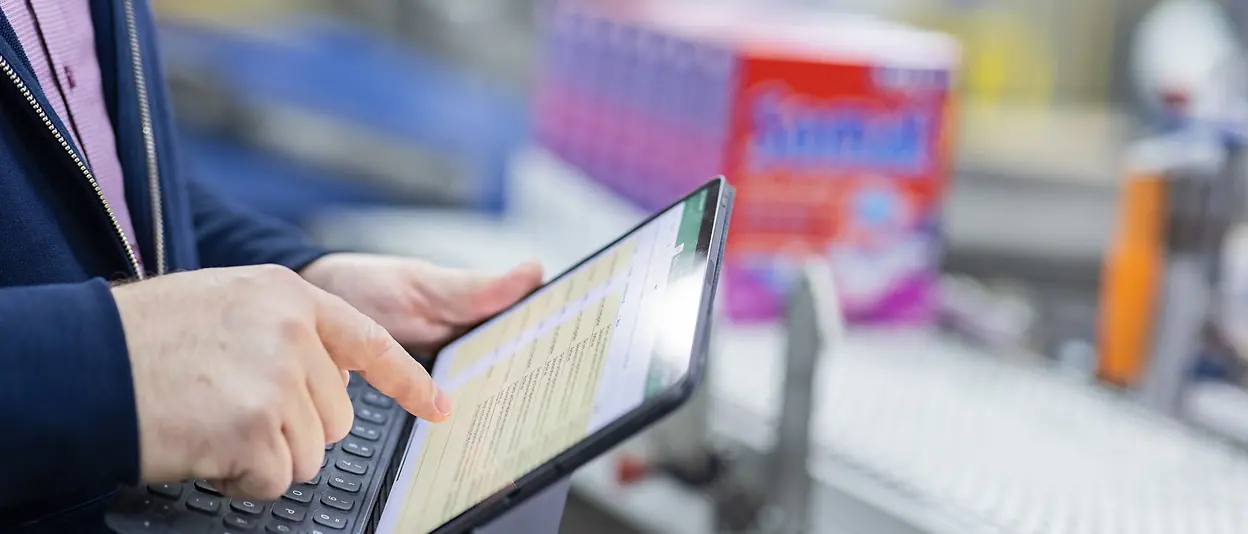Discover the brands and technologies from our business units Adhesive Technologies and Consumer Brands.
5 paths towards a more sustainable future
The climate crisis is only growing more urgent. It is up to companies like Henkel to transform their businesses to enable a regenerative planet. While sustainability is deeply anchored in our DNA, we continue to pursue ambitious goals in this regard: By 2030, our production aims to be climate positive. We are also committed to building a circular economy and are working with various partners along the entire value chain to achieve this goal. Our sustainability targets, which were approved by the Science Based Targets Initiative in 2020, also support the United Nations' Paris Climate Agreement. This agreement aims to limit global warming to 1.5 degrees Celsius. Here are five examples that illustrate how we contribute to protecting the climate.
1. Replacing fossil fuels with renewable raw materials
Renewable raw materials, which can for example be obtained from biomass, play a central role on the path to greater sustainability. Partnering with BASF, we will replace fossil raw materials with renewable ones over the course of the next four years using their certified biomass balance approach. This applies to most of our consumer goods products manufactured in Europe in the Laundry & Home Care and Beauty Care businesses. The Adhesive Technologies division is also focusing on renewable raw materials: with the Technomelt Supra ECO adhesive, for example, the team has developed a hotmelt adhesive for packaging with a bio-based content of up to 98 percent.
2. Switching to CO2-neutral energy in production
Henkel aims to reduce its CO2 footprint in production by 65 percent by 2025 compared to 2010. To achieve this goal, we are focusing primarily on improving our energy efficiency and using only electricity from renewable sources by 2030. In 21 countries, Henkel completely switched its production to green electricity, covering 68 percent of all of our global production by year-end 2021. In addition, we aim to replace the last remaining fossil fuels in production with climate-neutral alternatives such as biogas. This has already been done at the Laundry & Home Care production site in Duesseldorf and the Beauty Care site in Wassertrüdingen, both in Germany. These sites use only green electricity and biogas and thus operate CO2-neutrally.
For the full switch to green power, we are relying on a combination of different approaches: First, the generation of renewable energy at the site itself can, for example, be provided by solar panels. Second, purchasing green power directly from the grid is another option. Third, we use virtual coverage to cover some of our demand for green power. This involves concluding long-term virtual power purchase agreements in which green power from specific plants operated by a utility is fed into the power grid in quantities corresponding to the company's consumption. This approach has, for example, been implemented in the USA, where a wind farm covers 100 percent of Henkel's electricity requirements in the market. By purchasing green electricity, Henkel can help to build additional capacity for renewable energy generation.
3. Making production sites more sustainable through digitalization
Digitalization is a key driver to implement more sustainable production processes. Henkel holds a leading position in this respect. For the third time, the World Economic Forum and the consulting firm McKinsey named Henkel an "Advanced 4th Industrial Revolution Lighthouse" and thus a pioneer for Industry 4.0. The award went, for example, to the Laundry & Home Care plant in Toluca, Mexico. Beyond that, the factory was also named a “Sustainability Lighthouse”. Thereby, Henkel has one of the three most sustainable production sites in the Global Lighthouse Network. The plant has succeeded in increasing energy efficiency in production by digitalizing the spray drying process of powder detergents. Our "Digital Twin" also plays a central role. The Digital Twin refers to a cloud-based 3D image of the plant. It simulates processes and provides the machine operators with optimal process parameters as well as sustainability and safety measures.
The Digital Backbone – a cloud-based data platform that connects production sites worldwide – is also of great importance. It helps make production processes more sustainable by measuring resource consumption in real-time. If a machine consumes more energy or water than the company’s target value, employees are automatically notified.
4. Advancing a circular economy with recyclable packaging
One of the most important goals of our sustainability strategy is to make all of our packaging recyclable or reusable by 2025. At the end of 2021, we reached 86 percent. We also aim to increase the proportion of recycled material in all plastic packaging for consumer goods products to more than 30 percent by 2025. These measures contribute significantly to an efficient circular economy.
And we are right on track: since 2021, the bottles of the Beauty Care brand Nature Box are made of 100 percent recycled materials. Furthermore, the switch from liquid to solid products allows for smaller packaging and plastic packaging alternatives, as the Persil Power Bars show. Henkel also offers innovative solutions to facilitate recycling, for example with its Adhesive Technologies solutions. By using the adhesive LOCTITE LIOFOL, multilayer packaging can be separated more easily. The individual layers are sorted and returned to the value chain as high-quality materials. These are just a few of many examples of how we are helping to build a functioning circular economy.
5. Tips for environmentally responsible behavior in everyday life
Up to 90 percent of the environmental footprint of our products is created during their active use. Since our products are used in households around the world, we want to help consumers reduce their emissions too. We do so by developing more sustainable products, but also through targeted consumer communication. After all, our individual behavior also makes an important contribution to protecting the environment. That’s why Henkel provides tips and suggestions for this purpose on several websites. For example, in just a few minutes, consumers can use a calculator to determine how their lifestyle affects their carbon footprint. The footprint calculator is provided by Henkel and the Wuppertal Institute.











